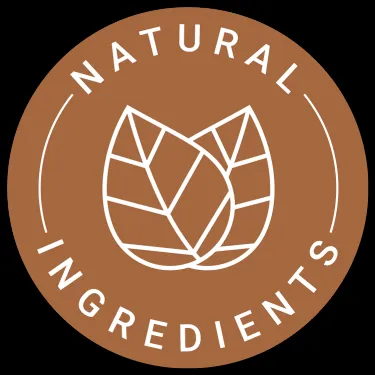Welcoming a dog into your home brings immeasurable joy, but sometimes, it also comes with the unexpected challenge of a picky eater. If you found yourself struggling in 2021 to find a meal your canine companion would eagerly devour, you’re not alone. Many dog parents face this frustration, wondering if their beloved pet is simply being stubborn or if there’s an underlying issue. The quest for the Best Dog Food For Picky Eaters 2021 often leads to exploring various brands, ingredients, and feeding strategies. Understanding the reasons behind your dog’s choosiness and knowing what to look for in their food can transform mealtime from a battle into a bonding experience, ensuring they receive the vital nutrients needed for a healthy, happy life.
Understanding Why Dogs Become Picky Eaters
A dog’s reluctance to eat can stem from a variety of factors, ranging from simple preferences to more serious health concerns. Identifying the root cause is the first step towards finding an effective solution and ensuring your dog thrives.
Medical Reasons
Sometimes, a sudden change in appetite or persistent pickiness can signal an underlying health issue. Dental pain, gastrointestinal upset, organ disease, or even certain medications can make eating uncomfortable or unappealing. If your dog’s pickiness is new, severe, or accompanied by other symptoms like lethargy, vomiting, or diarrhea, a veterinary check-up is crucial. A veterinarian can rule out medical conditions and provide guidance tailored to your dog’s specific health needs.
Behavioral Issues
Beyond health, behavioral factors frequently contribute to selective eating. Dogs can be creatures of habit, and inconsistencies in feeding schedules or locations can lead to anxiety. Free-feeding, where food is left out all day, might also teach dogs that food is always available, reducing their urgency to eat. Stress, new environments, or even competition with other pets can also impact their appetite. Owners who constantly offer new foods or table scraps might inadvertently train their dogs to hold out for “better” options.
Food Quality and Palatability
Just like humans, dogs have taste preferences. Low-quality dog food often contains fillers, artificial flavors, and less palatable ingredients that simply don’t appeal to a dog’s senses. Furthermore, some dogs may develop a dislike for a specific texture, flavor profile, or even the smell of their food. The quality and palatability of the food play a significant role in enticing a picky eater. Freshness also matters; stale or improperly stored food can lose its appeal.
Feeding Environment
The environment in which your dog eats can also impact their willingness to consume meals. A noisy, high-traffic area might make them feel insecure or distracted. Sharing a bowl with another pet, or even the type of bowl itself (e.g., plastic bowls retaining odors, deep bowls irritating whiskers), can be deterrents. Providing a quiet, consistent, and comfortable eating space can significantly improve mealtime experiences for a finicky dog.
Key Qualities of the Best Dog Food for Picky Eaters (2021 Standards)
When searching for the ideal food for a selective canine, certain characteristics stand out, aligning with what pet experts emphasized in 2021 as essential for encouraging healthy eating habits. Focusing on these qualities can help you choose a food that not only provides complete nutrition but also appeals to your dog’s discerning palate.
High Palatability
For picky eaters, taste is paramount. The best dog foods in 2021 often prioritized natural flavors derived from real meat, poultry, or fish, rather than artificial enhancers. Foods with a strong, appealing aroma tend to pique a dog’s interest more effectively. Wet foods, for example, are frequently more palatable due to their moisture content and richer scent.
Quality Ingredients (Protein-Rich, Natural)
A high-quality ingredient list is fundamental. Look for foods where a named meat source (e.g., “chicken,” “beef,” “salmon”) is the first ingredient, indicating a high protein content crucial for canine health. Avoid foods with excessive fillers like corn, wheat, or soy, which offer little nutritional value and can be less appealing. Natural ingredients, free from harmful chemicals, artificial colors, and drugs, are always preferable. This focus on natural goodness and high standards ensures not just taste, but also the overall well-being of your pet, contributing to digestive and oral health.
 A happy brown dog enjoying a Brutus & Barnaby treat, showcasing natural goodness and palatability
A happy brown dog enjoying a Brutus & Barnaby treat, showcasing natural goodness and palatability
Appropriate Texture
Some picky eaters have strong preferences for texture. Some dogs prefer crunchy kibble, while others might favor the softer consistency of wet food or the chewiness of freeze-dried options. Experimenting with different textures can reveal what your dog enjoys most. Mixing wet food with dry kibble is a common strategy to combine the benefits of both and increase appeal.
Limited Ingredients (for Allergies and Sensitivities)
If pickiness is linked to sensitivities or allergies, a limited ingredient diet (LID) might be beneficial. These foods reduce the number of potential allergens, making it easier to identify and avoid triggers. Even without allergies, a simpler ingredient list can sometimes be more appealing to dogs who react negatively to complex blends.
Nutrient-Dense
Even a small amount of food should provide significant nutrition for a picky eater. Nutrient-dense formulas ensure that even if your dog eats less than recommended, they still receive essential vitamins, minerals, and macronutrients. This means avoiding “empty calories” and focusing on foods packed with beneficial components.
Top Dog Food Types for Picky Eaters (Reviewed in 2021)
In 2021, pet nutritionists and dog parents alike explored various food types to satisfy even the most discerning palates. Each type offers distinct advantages that might make it the perfect choice for your finicky companion.
Wet Food
Often considered the go-to for picky eaters due to its high moisture content, rich aroma, and soft texture. Wet food is typically very palatable and can be a great way to add hydration to your dog’s diet. It comes in various forms, from pâtés to chunky stews, offering different textures to explore.
Dry Food (Kibble)
While some picky eaters reject kibble, high-quality, protein-rich dry foods can still be appealing. Many brands offer specialized formulas with flavorful coatings or unique shapes designed to entice. Mixing kibble with warm water, broth, or a wet food topper can significantly enhance its appeal.
Fresh Food
Gaining popularity in 2021, fresh dog food, often made with human-grade ingredients, resembles home-cooked meals. Its fresh scent and natural taste can be incredibly attractive to picky dogs. These diets are often customized and prepared with minimal processing, offering excellent palatability and nutrient density.
Freeze-Dried Raw Food
This type combines the benefits of a raw diet with the convenience of dry food. Freeze-dried raw foods are minimally processed, retaining most of their natural nutrients and flavors. They can be served as a complete meal or as a highly palatable topper, rehydrated with water or broth. The intense natural flavors are often irresistible to picky eaters.
How Brutus & Barnaby’s Quality Treats Can Complement a Picky Eater’s Diet
While the focus is on finding the best dog food, high-quality treats can play a significant role in managing a picky eater, either as a supplemental enticement or as a valuable source of nutrients that also supports overall health. Brands like Brutus & Barnaby, with their commitment to natural goodness and rigorous quality control, offer treats that align with the principles of promoting a dog’s well-being.
Brutus & Barnaby’s treats are specifically crafted to promote digestive and oral health. They are made with natural ingredients, completely free from harmful chemicals and drugs, which is paramount for sensitive dogs or those needing encouragement to eat. The company’s promise of quality is backed by a rigorous hand inspection process for every treat, ensuring that what your dog consumes is not only delicious but also a healthy supplement to their diet. This meticulous attention to detail helps dogs lead a long, joyful life.
 A bag of Brutus & Barnaby natural dog treats, emphasizing quality and healthy ingredients
A bag of Brutus & Barnaby natural dog treats, emphasizing quality and healthy ingredients
These treats do more than just tantalize taste buds; they’re packed with health benefits. From improving digestive health to keeping teeth and gums clean, they represent a perfect combination of flavor and function. For a picky eater, a highly palatable and healthy treat can be used strategically – perhaps as a reward after eating some food, or as a high-value enticement mixed sparingly with their regular meal to encourage consumption. Many customer reviews highlight how dogs “chow down” on these treats, even when they’re usually finicky, indicating their strong appeal. The brand’s products have even been “Voted 9.8/10 by Veterinarians.org” and are “Endorsed And Trusted By” various organizations, showcasing their commitment to quality and expertise. This level of trust and expert endorsement reinforces their credibility as a valuable addition to a dog’s diet, especially when dealing with pickiness.
 A dog looking expectantly at Brutus & Barnaby treats, illustrating their appeal to even the most discerning pets
A dog looking expectantly at Brutus & Barnaby treats, illustrating their appeal to even the most discerning pets
Furthermore, Brutus & Barnaby stands by their products with a money-back, returnless guarantee, demonstrating confidence in their treats’ quality and your dog’s satisfaction. This commitment to customer peace of mind reflects their dedication to providing excellent products. Integrating such high-quality, palatable treats, particularly those sourced responsibly and cooked safely without additives, can be a game-changer for pet parents trying to stimulate their picky eater’s appetite and ensure they receive adequate nutrition. Their FAQ even mentions careful sourcing from the USA and other regions, adhering to strict quality standards for food safety and inspection.
 A "Voted 9.8/10 by Veterinarians.org" seal, signifying the trust and approval of veterinary professionals
A "Voted 9.8/10 by Veterinarians.org" seal, signifying the trust and approval of veterinary professionals
Tips for Feeding Your Picky Dog
Beyond choosing the right food, implementing effective feeding strategies is crucial for successfully managing a picky eater. Consistency, patience, and a positive approach can make all the difference.
Establishing a Routine
Dogs thrive on routine. Feed your picky dog at consistent times each day in the same quiet location. Offer the food for a limited time, usually 15-20 minutes, and then remove it whether they’ve eaten or not. This teaches them that food is not always available and encourages them to eat when it’s offered.
Avoiding Free-Feeding
While convenient, free-feeding can exacerbate pickiness by allowing dogs to graze throughout the day. This reduces their hunger drive and diminishes the value of mealtime. Scheduled feeding times can help regulate their appetite and make them more eager to eat.
Making Mealtime Positive
Create a positive association with mealtime. Avoid hovering or showing excessive anxiety if your dog doesn’t eat immediately. Instead, present the food calmly and walk away. Praising them when they do eat can reinforce the desired behavior. Some dogs also respond well to puzzle feeders or interactive toys that make eating a fun activity.
Consulting a Vet or Nutritionist
If pickiness persists despite your best efforts, or if you suspect a medical reason, always consult your veterinarian. They can provide professional advice, recommend specific diets, or rule out underlying health issues. A certified canine nutritionist can also offer tailored guidance on meal plans and dietary adjustments for your unique dog.
Conclusion
Navigating the world of a picky eater can be challenging, but with the right approach and high-quality food, you can help your dog enjoy mealtime and thrive. In 2021, the emphasis remained on understanding the root causes of pickiness, prioritizing palatable and nutrient-dense foods, and implementing consistent feeding routines. By focusing on natural, wholesome ingredients—whether in their main meals or as healthy supplements like Brutus & Barnaby treats—you provide your canine companion with the best chance for a happy and healthy life. Remember, patience and a partnership with your vet are key to ensuring your finicky friend receives the nutrition they deserve. Explore different options, observe your dog’s preferences, and celebrate every successful meal.
